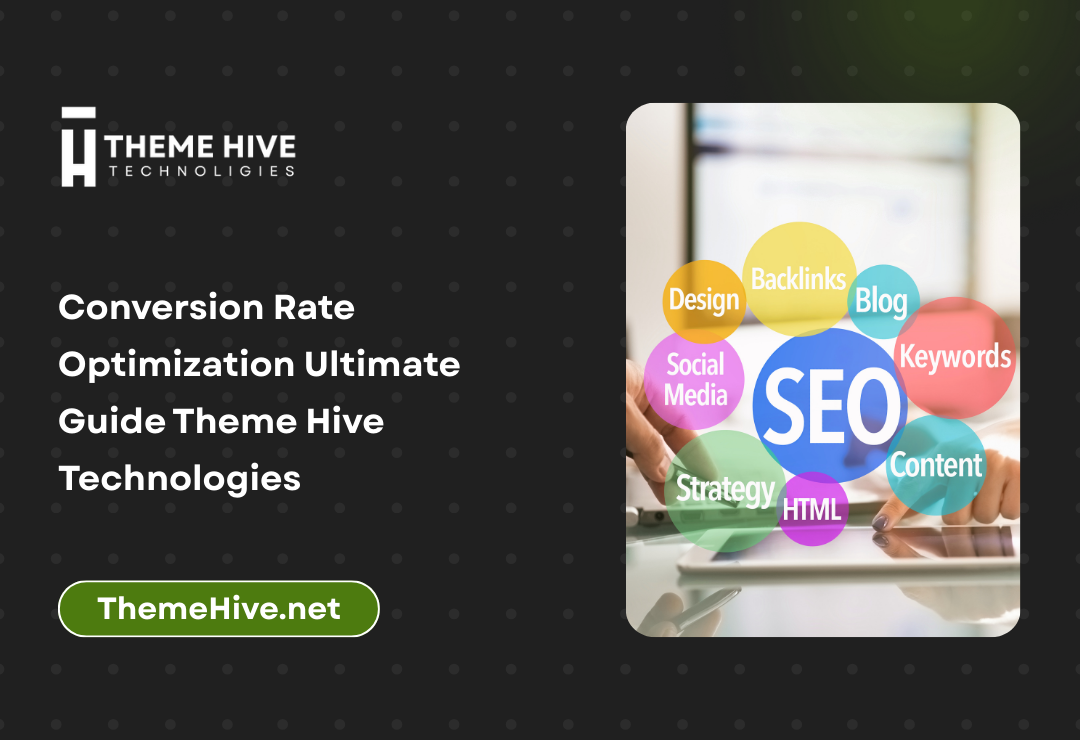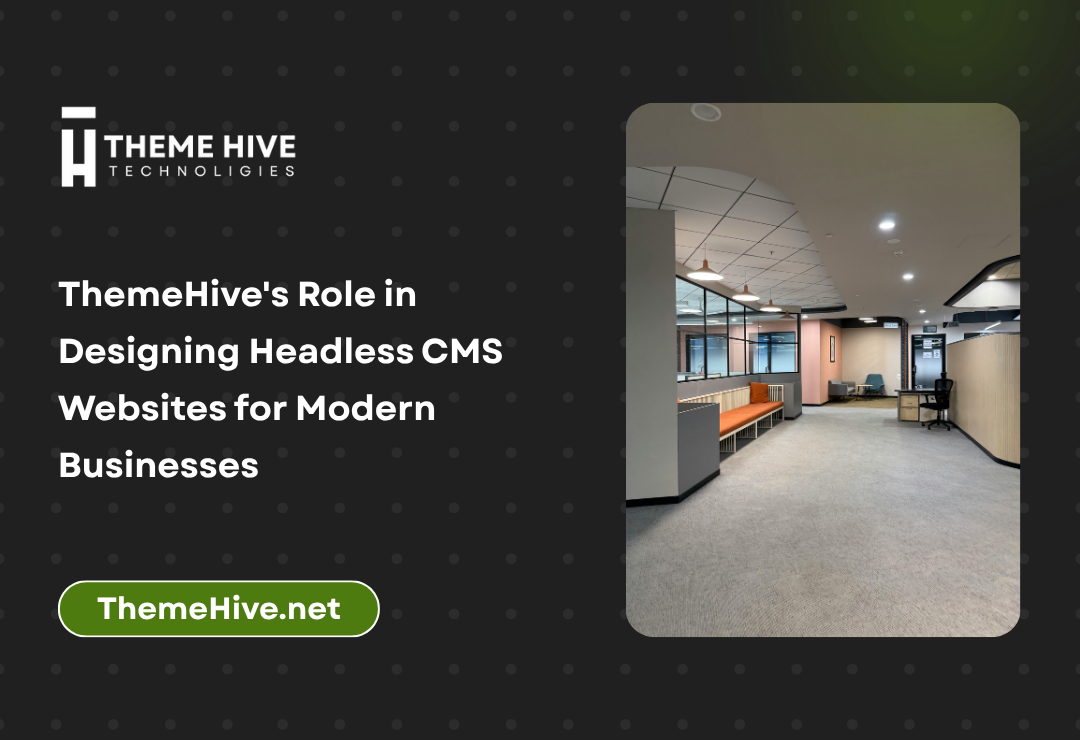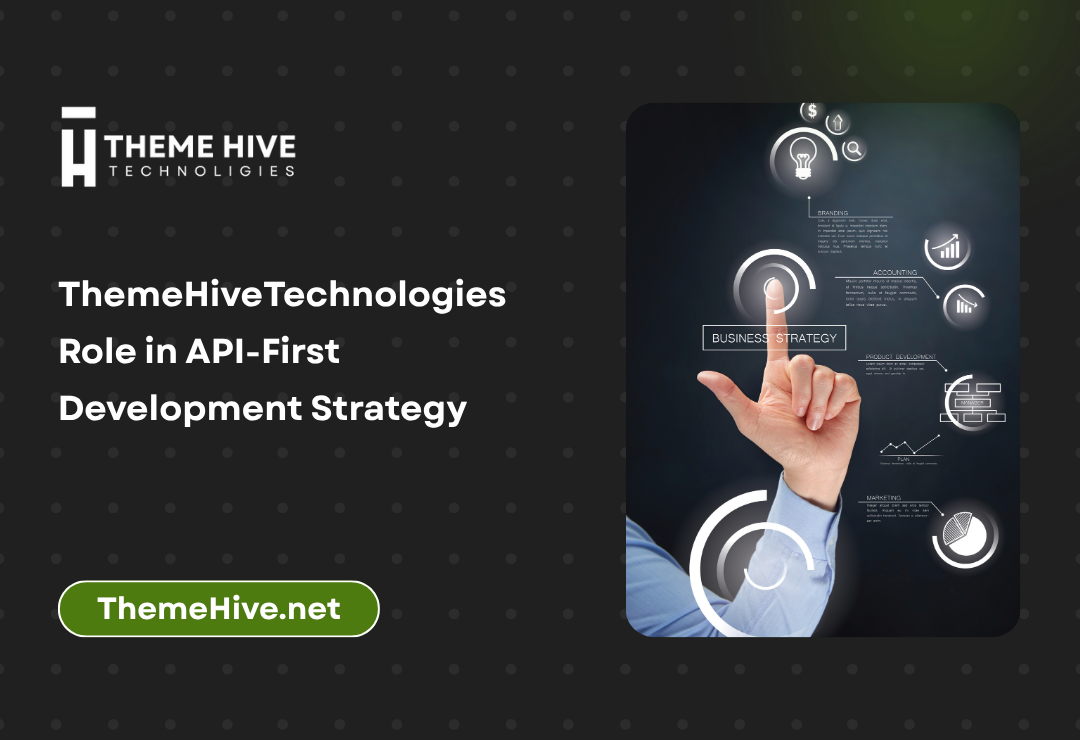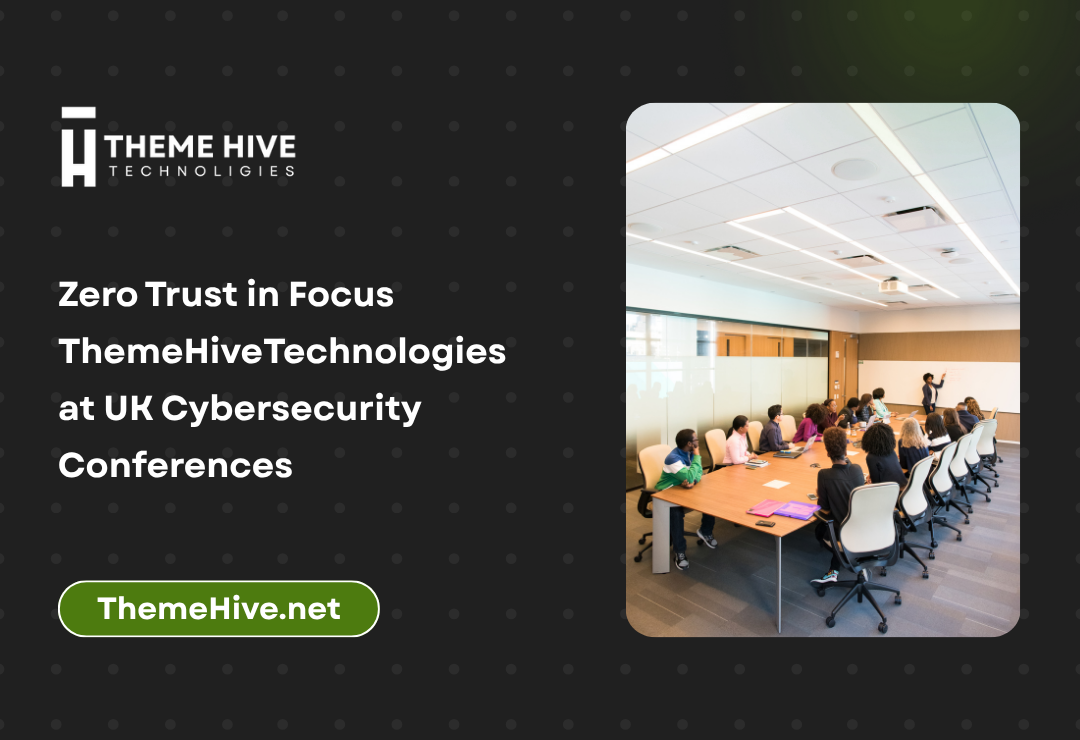In today’s crowded digital marketplace, attracting visitors is only the first hurdle. The true measure of success lies in what happens after they arrive: Do they take the desired action? Whether that action is making a purchase, filling out a contact form, subscribing to a newsletter, or downloading a resource, transforming passive browsers into active participants is the holy grail of online business. This transformative process is the domain of Conversion Rate Optimization (CRO).
What is Conversion Rate Optimization?
CRO is the systematic science of understanding how users interact with your website and implementing changes to increase the percentage of visitors who complete your desired goals. It’s not about tricking users; it’s about removing friction, enhancing value, and creating seamless experiences that align perfectly with user intent and business objectives. As digital competition intensifies and customer expectations evolve, mastering CRO has transitioned from a “nice-to-have” to an absolute necessity for sustainable growth.
Why CRO Matters More Than Ever:
- Maximize ROI on Existing Traffic: Instead of constantly spending more to acquire new visitors, CRO focuses on extracting more value from the traffic you already have. This is significantly more cost-effective.
- Improve User Experience (UX): Effective CRO inherently improves usability. Removing friction, clarifying messaging, and streamlining processes directly enhance the user journey.
- Gain Competitive Advantage: In crowded markets, even a 1% improvement in conversion rate can translate to substantial revenue growth and market share gain.
- Data-Driven Decision Making: CRO forces organizations to rely on evidence rather than opinions or personal preferences, fostering a culture of experimentation and learning.
- Enhance Customer Insights: The process of understanding why users convert (or don’t) provides invaluable insights into customer needs, pain points, and motivations.
The CRO Mindset: Psychology, Data, and Iteration
Successful CRO isn’t just about tactics; it’s about cultivating the right mindset:
- Psychological Understanding: Human decision-making is often emotional and irrational. Effective CRO leverages principles of behavioral psychology to create experiences that resonate subconsciously.
- Data-Driven Rigor: Gut feelings are unreliable. CRO demands commitment to gathering, analyzing, and interpreting quantitative and qualitative data.
- Iterative Experimentation: CRO is a continuous cycle of learning and improvement. It embraces failure as a learning opportunity and celebrates small wins that compound over time. Organizations like ThemeHive Technologies specialize in instilling this mindset and providing structured frameworks for execution.
Phase 1: Research & Analysis – Uncovering Optimization Opportunities
Deep research is non-negotiable before making changes. Jumping straight to testing without understanding user behavior is a recipe for wasted effort.
Quantitative Analysis: The “What” Happens
- Web Analytics (Google Analytics 4): Use funnel analysis to map paths to conversion and identify drop-off points. Analyze behavior flow, site search, exit pages, and event tracking.
- Heatmaps & Click Maps (Hotjar, Microsoft Clarity): Visualize where users click, scroll, and move. Identify ignored areas (cold spots), over-clicked areas, and scroll depth.
- Form Analytics (Formisimo): Track form completion rates, field-by-field abandonment, and time spent per field to pinpoint friction.
- Session Recordings: Watch anonymized videos of real user sessions to observe confusion points, hesitations, and rage clicks.
Qualitative Research: The “Why” Behind the Numbers
- User Surveys (Qualaroo, Hotjar): Trigger intercept surveys based on behavior or use feedback polls to gather opinions.
- User Interviews & Focus Groups: Conduct one-on-one or group discussions to uncover deep motivations and frustrations.
- Customer Support & Sales Feedback: Analyze support tickets, chat transcripts, and sales call notes for common problems.
- Competitor Analysis: Evaluate competitor websites using the same tools. Identify best practices and opportunities to differentiate.
Synthesizing Insights & Prioritizing Opportunities
Combine quantitative (“what”) and qualitative (“why”) data to form hypotheses. Prioritize opportunities using frameworks like:
- ICE Score: (Impact x Confidence x Ease) / 10
- Value vs. Effort Matrix: Focus on high-value, low-effort “Quick Wins” first. Partnering with experts like ThemeHive Technologies can significantly accelerate this process.
Phase 2: Hypothesis Formulation – The Blueprint for Change
A hypothesis is a testable statement predicting the outcome of a specific change.
Anatomy of a Strong CRO Hypothesis:
We believe that [changing specific element X] will lead to [measurable outcome Y] because [underlying reason based on research/data].
Examples:
- Weak: “Changing the button color will increase conversions.”
- Strong: “We believe that changing the ‘Add to Cart’ button color from blue to orange will increase the add-to-cart rate by 10% because heatmaps show users are clicking near but not on the current blue button, suggesting it lacks sufficient contrast and visibility.”
Formulating Hypotheses Based on Psychology:
- Social Proof: “We believe that adding a ‘Recently Viewed’ section showing 3 popular products will increase average order value by 8% because users are influenced by seeing what others are buying…”
- Scarcity/Urgency: “We believe that displaying a ‘Only 5 left in stock!’ message on low-stock product pages will increase conversion rate by 15% because the fear of missing out (FOMO) creates a psychological trigger…”
Phase 3: Experimentation & Testing – Validating Your Ideas
Experimentation is the core of CRO, providing empirical evidence.
Key Testing Methodologies:
- A/B Testing: Compare two versions of a page (Control vs. Variation) to see which performs better on a specific metric. Best for testing single changes.
- Multivariate Testing (MVT): Test multiple elements simultaneously on the same page to understand interactions. Requires more traffic.
- A/N Testing: Test a single page against multiple variations (e.g., 3 different headlines).
- Redirect Testing: Test completely different page designs or URLs.
Essential Testing Principles:
- Test One Variable at a Time (A/B Testing).
- Ensure Statistical Significance (95%+ confidence).
- Run Tests Long Enough (avoid stopping early).
- Use Sufficient Sample Size.
- Segment Your Data (new vs. returning, mobile vs. desktop).
- Set a Primary Metric.
- Use Reliable Testing Tools (Google Optimize, Optimizely, VWO).
Technical Implementation: Setting up tests correctly is crucial. Theme Hive Technologies provides expertise in technical setup, avoiding pitfalls like caching issues or invalid results, ensuring complex tests run smoothly.
Phase 4: Analysis & Implementation – Learning and Acting
Interpreting results and acting on them is key.
Interpreting Test Results:
- Statistical Significance: Did the test reach 95% confidence?
- Magnitude of Change: Is the improvement meaningful?
- Direction: Winner, Loser, or No Significant Difference?
- Segment Analysis: Did performance differ across user segments?
- Secondary Metrics: Did the change impact other goals positively or negatively?
Understanding the “Why”: Go beyond stats. Review session recordings, analyze qualitative feedback, compare heatmaps, and consider external factors.
Making Decisions:
- Implement the Winner: Roll out the successful variation.
- Iterate: Use learnings to refine hypotheses and create new tests.
- Archive the Test: Document results and learnings for future reference.
Continuous Improvement: CRO is a cycle: Research → Hypothesize → Test → Analyze → Implement → Research (Again). This virtuous cycle compounding small gains over time. Theme Hive Technologies excels at managing this cycle.
Key Optimization Areas: Where to Focus Your Efforts
Certain website areas consistently offer high optimization potential.
1. Landing Pages: Singular Focus is Key
- Clear Value Proposition: Instantly communicate the unique value above the fold.
- Audience-Specific Messaging: Tailor content to match the traffic source.
- Visual Hierarchy: Guide the eye effortlessly to the CTA.
- Trust Signals: Display testimonials, reviews, security badges.
- Compelling CTAs: Use action-oriented, benefit-focused language (“Get My Free Quote”).
2. Calls-to-Action (CTAs): The Conversion Gateway
- Action-Oriented Language: Use strong verbs (“Download the Guide,” “Start My Free Trial”).
- Benefit-Focused: Connect to user outcomes (“Save 20% Today”).
- Strategic Placement: Place CTAs where users need them (end of sections, sticky CTAs).
- Visual Contrast: Make CTAs impossible to miss with color and size.
- Urgency/Scarcity (Ethically): Use “Limited Time Offer” genuinely.
3. Forms: Eliminate Friction Ruthlessly
- Minimize Fields: Collect only essential information. Use progressive profiling.
- Clear Labels & Placeholders: Be descriptive; explain why you’re asking.
- Smart Defaults & Auto-Fill: Pre-select options; leverage browser autofill.
- Real-Time Validation: Provide immediate, specific error messages.
- Progress Indicators: Show steps in multi-step forms.
- Trust & Security Signals: Reassure users about data safety.
4. Navigation & UX: The Seamless Journey
- Intuitive Information Architecture: Organize content logically from the user’s perspective.
- Prominent Search: Implement visible, robust search with autocomplete.
- Clear Visual Hierarchy: Guide attention using size, color, spacing.
- Mobile-First Design: Ensure flawless usability on small screens (thumb-friendly taps, simplified menus).
- Page Speed Optimization: Compress images, minify code, leverage caching/CDNs. Aim for sub-3-second loads.
5. Product Pages: From Interest to Purchase
- High-Quality Visuals: Multiple images, zoom, and crucially, videos.
- Benefit-Focused Descriptions: Tell a story, solve problems.
- Social Proof Galore: Reviews (with photos), user-generated content, Q&As.
- Clear Pricing, Shipping & Returns: Be transparent; make policies easy to find.
- Multiple CTAs & Urgency: “Add to Cart,” “Add to Wishlist,” stock indicators.
6. Checkout Process: The Final Hurdle
- Guest Checkout: Always offer it; don’t force account creation.
- Progress Indicators: Show steps clearly (Cart > Shipping > Payment > Review).
- Auto-Fill & Address Lookup: Reduce manual entry time and errors.
- Multiple Payment Options: Offer credit cards, PayPal, Apple Pay, BNPL (Klarna, Afterpay).
- Transparent Costs: Display all costs early (shipping, taxes).
- Trust & Security: Display badges; use HTTPS (SSL).
7. Building Trust & Credibility: Overcoming Skepticism
- Professional Design & Branding: Invest in quality visuals and consistency.
- Prominent Testimonials & Reviews: Feature real customers with names/photos/videos.
- “About Us” & Team Pages: Build human connection and rapport.
- Clear Contact Information: Make it easy to reach support.
- Trust Badges & Certifications: Display security seals, payment logos, industry awards.
- Transparent Policies: Easily accessible Privacy, Terms, Return/Refund policies.
8. Leveraging Psychology: The Subtle Science of Influence
- Social Proof: “People like me are doing this.” Testimonials, reviews, user counts.
- Scarcity & Urgency: “This opportunity is limited.” Apply genuinely.
- Authority: “Experts trust this.” Media mentions, endorsements, certifications.
- Reciprocity: “I’ll give you something first.” Offer valuable free content upfront.
- Commitment & Consistency: “Start small, build up.” Get a small commitment first (newsletter signup).
- Liking: “People buy from people they like.” Use relatable imagery, friendly language.
- Loss Aversion: “Don’t miss out.” Frame offers in terms of avoiding loss.
9. Personalization: Tailoring the Experience
- Dynamic Content: Show different headlines/offers based on user data (location, behavior).
- Behavioral Targeting: Trigger content/offers based on specific actions (e.g., discount pop-up for pricing page lingerers).
- Segmented Email Campaigns: Use website data for highly relevant follow-ups (abandoned cart).
- Account Personalization: Allow saved preferences, order history, personalized recommendations.
10. Mobile Optimization: The Non-Negotiable Priority
- Responsive Design: Flawless adaptation to all screen sizes/orientations.
- Speed is Paramount: Optimize images, leverage caching/CDNs. Aim for sub-2-second mobile loads.
- Touch-Friendly Interface: Large tap targets, spaced appropriately for thumbs.
- Simplified Forms & Navigation: Minimal fields, thumb-friendly menus.
- Mobile-Specific CTAs: Place key CTAs where thumbs rest (often above bottom).
Advanced CRO Strategies: Leveraging Content AI
In the rapidly evolving landscape of digital marketing, Content AI is emerging as a game-changer for conversion rate optimization. Artificial intelligence and machine learning are revolutionizing CRO by automating analysis, personalization, and testing at scale.
1. AI-Powered Analytics & Insights
Content AI tools can analyze vast amounts of user data to identify patterns and predict behavior that humans might miss. For instance, AI can detect subtle correlations between page elements and conversion rates, providing insights that lead to more effective hypotheses. These tools can also process qualitative data from surveys and reviews at scale, identifying common themes and pain points much faster than manual analysis.
2. Automated Personalization at Scale
With Content AI, businesses can deliver hyper-personalized experiences to individual users in real-time. Machine learning algorithms analyze user behavior, preferences, and predicted intent to dynamically serve the most relevant content, offers, and product recommendations. This level of personalization, previously impossible at scale, significantly boosts engagement and conversion rates.
3. Intelligent Experimentation
Content AI platforms can run thousands of micro-tests simultaneously, identifying winning variations and implementing them without human intervention. This dramatically accelerates the optimization cycle, allowing businesses to test more ideas and learn faster than ever before. AI can also prioritize tests based on predicted impact, ensuring resources are focused on the most promising changes.
[Image: Content AI for conversion rate optimization analytics]
Alt text: Content AI for conversion rate optimization analytics
4. Predictive Lead Scoring
Content AI can analyze user interactions to score leads based on their likelihood to convert. This allows businesses to prioritize high-intent users, focus sales efforts where they’ll have the most impact, and automate nurturing sequences for lower-scoring leads.
5. AI-Enhanced Chatbots
Advanced chatbots powered by Content AI can qualify leads, answer common questions, guide users through purchases, and provide personalized support 24/7. These conversational agents reduce friction and capture conversions outside of business hours, improving the overall customer experience.
To explore how Content AI can transform your CRO strategy, consider exploring tools like Optimizely or Google’s AI solutions for marketing.
Measuring Success: Beyond the Basic Conversion Rate
Track a broader set of KPIs for a true picture.
Key Performance Indicators (KPIs):
- Primary Conversion Rate: The ultimate North Star metric.
- Secondary Conversion Rates: Newsletter sign-ups, quote requests, etc.
- Revenue Per Visitor (RPV): Average revenue per visitor (combines conversion rate + AOV).
- Average Order Value (AOV): Average amount spent per transaction.
- Customer Acquisition Cost (CAC): Cost to acquire a new customer (reduced by CRO).
- Customer Lifetime Value (CLV): Total revenue expected from a customer (improved by quality conversions).
- Bounce Rate: % leaving after one page (context-dependent).
- Time on Page / Session Duration: Indicator of engagement.
- Pages per Session: Exploration level.
- Exit Rate: % leaving from a specific page (high on checkout/pricing = friction).
- Cart Abandonment Rate: % adding to cart but not purchasing.
- Form Abandonment Rate: % starting a form but not finishing.
- CTR on CTAs/Links: Effectiveness of calls to action.
Attribution Modeling: Understand the full customer journey using multi-touch models (First Click, Linear, Time Decay, Position-Based) instead of just Last Click. Learn more about attribution modeling from Google. Theme Hive Technologies assists with robust attribution implementation.
Calculating CRO ROI:ROI of CRO = (Value of Conversions Gained - Cost of CRO Efforts) / Cost of CRO Efforts
- Value of Conversions Gained: Additional revenue/leads from the conversion lift.
- Cost of CRO Efforts: Salaries, tools, agency fees (e.g., ThemeHive Technologies).
CRO Dashboard: Consolidate KPIs using tools like Google Data Studio for easy monitoring.
Overcoming Common CRO Challenges
1. Securing Buy-In & Resources:
- Solution: Frame CRO in terms of ROI and customer experience. Start with high-impact, low-effort wins. Partner with agencies like ThemeHive Technologies to access expertise without large hires.
2. Data Silos & Lack of Integration:
- Solution: Implement a central analytics platform. Create cross-functional CRO teams. Align on shared goals. Communicate regularly.
3. Technical Implementation Hurdles:
- Solution: Invest in training. Collaborate closely with dev teams. Use robust testing platforms. Partner with technically proficient agencies like Theme Hive Technologies.
4. Analysis Paralysis & Fear of Testing:
- Solution: Foster a “Test and Learn” culture. Start with high-confidence hypotheses based on research. Set clear decision criteria. Prioritize ruthlessly. Celebrate wins and learn from losses.
5. Scaling CRO Across a Large Organization:
- Solution: Establish a central CRO framework. Identify CRO champions in teams. Create shared resources/knowledge bases. Implement governance. Centralize tools/budget where possible.
6. Keeping Up with Changing Technology & Trends:
- Solution: Allocate learning time. Engage with communities. Partner with experts on emerging trends (AI, privacy). Pilot new tools.
7. Balancing Short-Term Wins with Long-Term Strategy:
- Solution: Maintain a dual-track approach (quick wins + foundational improvements). Develop a strategic roadmap. Monitor long-term health metrics. Communicate the value of foundational work.
Conclusion: The Continuous Journey of Conversion Excellence
CRO is not a destination; it’s an ongoing commitment to understanding users, removing friction, and delivering better experiences that drive business growth. It combines deep research, data-driven hypothesis testing, rigorous experimentation, continuous analysis, and a relentless focus on key optimization areas.
The ultimate “secret” of CRO is this: There are no secrets, only a commitment to continuous learning and improvement. Every interaction is an opportunity to learn. Every test, win or loss, provides valuable data. Every optimization, no matter how small, compounds over time.
By embracing the core principles – starting with empathy, letting data guide (not dictate), testing relentlessly, thinking long-term, and focusing on value – you can unlock your website’s full conversion potential. Partnering with specialized agencies like ThemeHive Technologies can accelerate this journey significantly, bringing deep expertise, structured methodologies, and advanced tools to navigate complexities faster and more effectively.
As you embark on or continue your CRO journey, remember: The digital landscape evolves, but understanding users and delivering value remain constant. Begin your optimization journey today – your future customers (and your bottom line) will thank you.
Explore expert CRO guidance and implementation with ThemeHive Technologies:
- Services: https://themehive.net/services/
- About Us: https://themehive.net/about/
- News & Articles: https://themehive.net/news-articles/
- Contact: https://themehive.net/contact-us/
- Homepage: https://themehive.net/







